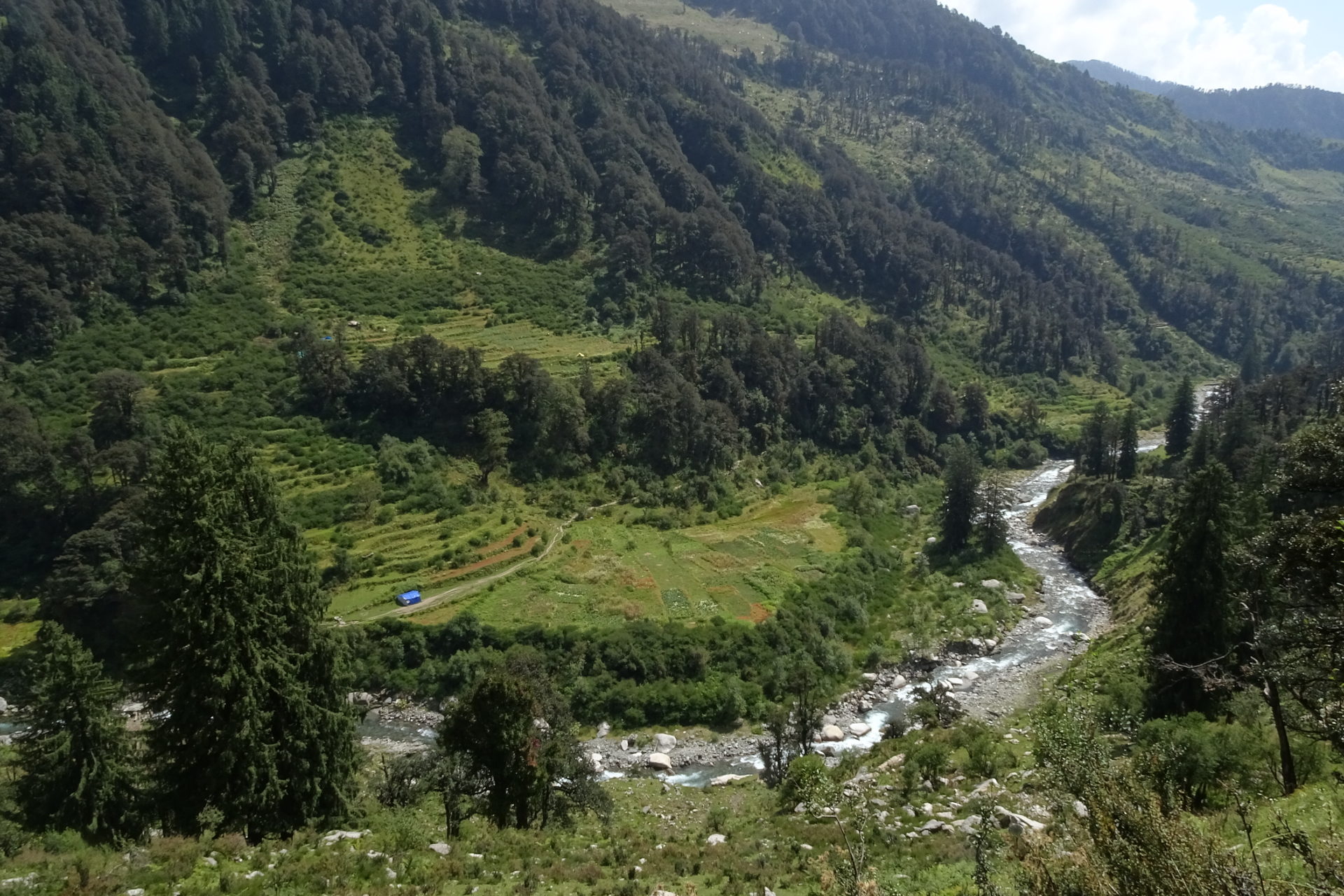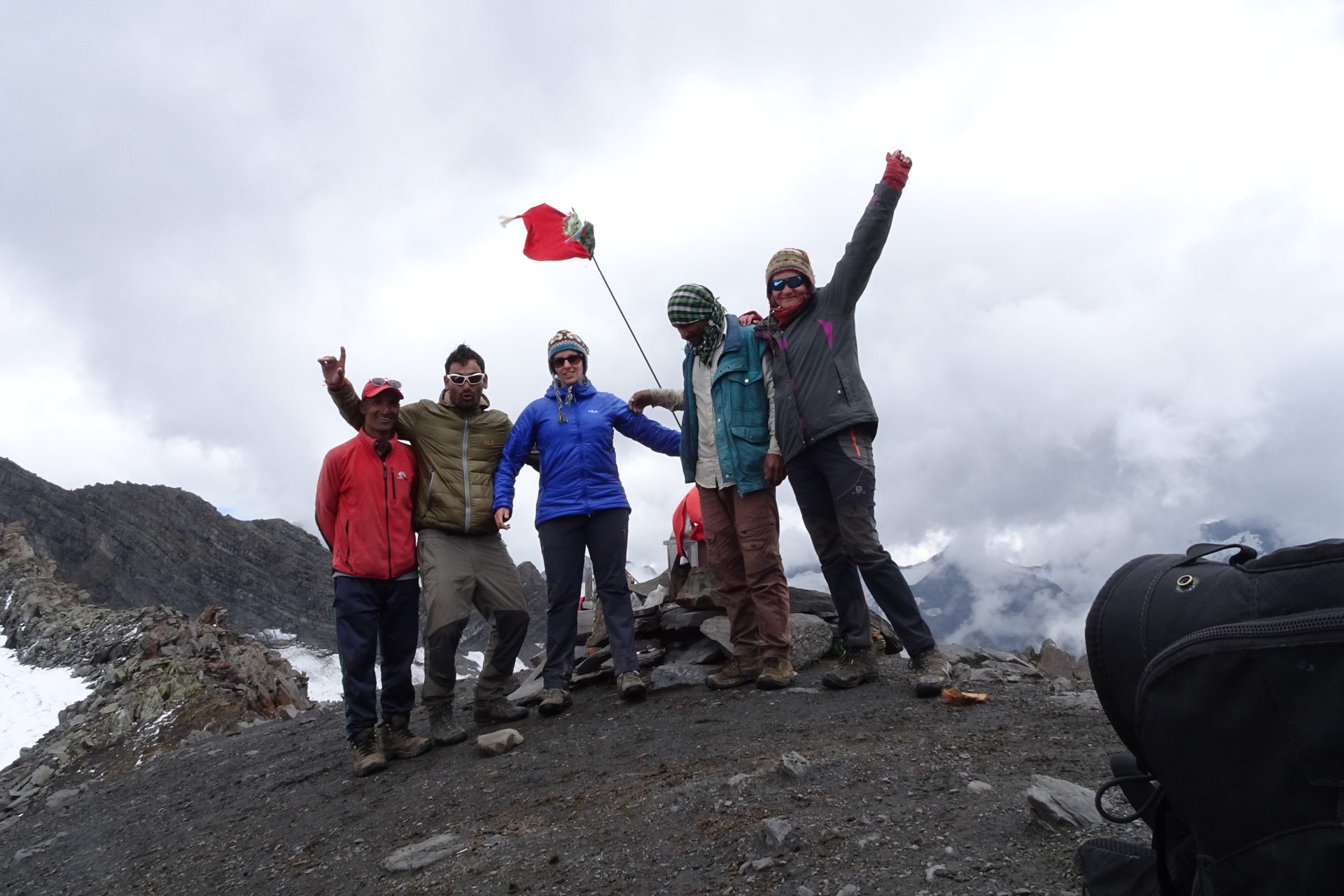- Sport & Abenteuer Reisen
- Reise Bausteine
- Trekking Reisen
Overview
One of the most beautiful and versatile treks in Himachal Pradesh. It leads us over two high mountain passes from the Valley of the Gods, the Kullu Valley, into the Kangra Valley to the Dalai Lama.
Wild mountain flowers, beautiful views, evergreen forest and lush pastures will delight us on this trek. In addition, it goes over mighty glaciers and again and again we will meet shepherds with their herds. Maybe we are lucky and can see deer or even bears. This trek is challenging and takes us to the remote village of Bara Banghal. It can only be reached after a two-day walk and has no road connection. Very few trekkers find their way here, as it can only be reached via two 4700 meter high passes.
This gives us a wonderful insight into the traditional way of life of the mountain people. During the summer months, the village community thrives on growing vegetables, taking care of their sheep and many wild plants and herbs are collected for consumption in the area. There is even a school here.
The trek ends in Dharamshala, the place where the Dalai Lama has his exiled government. There is a large monastery here and the place is predominantly Buddhist.
This trek can also be booked as a complete package from/to Delhi. Please click here!
Program
Day 1 Manali (2050 m)- Lamadug (3300 m) 4/5 hours
Today our twelve-day trekking tour starts with a steep climb. It starts from the famous Hadimba temple, first through green coniferous forests, then over meadows full of flowers to the pasture Lamadug at 3300 m. From here we have a magnificent view of the Inderasan (6220 m) and the Deo Tibba (6001 m). (Overnight in the tent) -/L/D
Day 2 Lamadug- Riyali Thach (3600 m) 5/6 hours
It goes up high, so we have a spectacular view of the entire Kullu Valley. We pass Lake Ranisui and can make a small detour to the 4100 meter high Khanpari Tibba. The route continues on the ridge until we reach our camp near a shepherd’s hut in the afternoon. (Overnight in a tent) B/L/D
Day 3 Riyali – Shangor (3800 m) 5 hours
Today we go through alpine forest until we reach the tree line and then continue to follow the river, high into the valley. Finally, we go to the base camp of Kalihani Pass a little higher uphill. (Overnight in a tent) B/L/D
Day 4 Shangor – KALIHANI PASS (4640 m) Dhanko Thach 6 hours
On rocky rubble we follow a path along a snow-covered glacier. We climb over the glacier, an interesting experience, until we finally reach the top of Kalihani Pass. From here we can enjoy a gigantic view of the mountain peaks of the Kullu and Lahaul valleys. We cross the pass. During the descent it is necessary to get safely over the large glacier and its crevices. The Panorama into the next valley with the many glacial lakes is indescribable. (Overnight in a tent) B/L/D
Day 5 DhankoThach – Lamba Parao (3150 m), 6/7 hours
Without major ascents or descents, it always goes along the Kalihani River. We meet shepherds in their temporary huts and follow the path along the river to our camp. It is also important to cross one or the other stream. (Overnight in a tent) B/L/D
Day 6 Lamba Parao – BARA BANGAHAL (2540 m) 6-7 hours
A beautiful tour along the river to the secluded village of Bara Banghal. it goes up and down again and again, even over smaller mountain ridges. Before we reach the village, we walk through the corn and vegetable fields of the inhabitants – also one or the other marijuana field we will cross. This village, surrounded by mountains, is only accessible on foot and is inhabited by the Gaddis (shepherds) during the summer months. Camping is on the school grounds. (Overnight in a tent) B/L/D
Day 7 Day of Recreation in Bara Banghal
Today we use today to rest and visit the village. It is easy to get into a friendly exchange with the open-minded villagers.
Or how about a refreshing dip in the river? (Overnight in a tent) B/L/D
Day 8 Bara Banghal – Marh (3850 m) Basecamp by THAMSAR PASS, 6/7 hours
It goes up to the next valley. First quite steep through forests, then it goes a little flatter over lush meadows. We camp near a stream. (Overnight in a tent) B/L/D
Day 9 Base Camp – THAMSAR PASS (4700 m) -Panihartu (3600 m) 14 Km 5/6 hours
Over snow it goes up to the glacier. At 4700 meters we cross the Thamsar Pass and enjoy the panoramic view of the Dhauladhar mountain range. After a 5 km descent we reach our camp in a small idyllic side valley. (Overnight in a tent) B/L/D
Day 10 Panihartu – Palachak Deota (2850 m) 16 Km 4/5 hours
We follow the Uhr stream, where we cross it again and again over unmelted snow bridges, then we continue through forests. The path gets better and better until we reach a beautiful hiking trail. Load horses come to meet us, transporting provisions to Bara Banghal. (Overnight in a tent) B/L/D
Day 11 Palachak Deota – Billing (2600 m) 4/5 hours
Another relaxing hiking day. We meet women with their cows, men order their cabbage fields and it is clearly noticeable that we are reaching civilization again. In fact, it’s just under 2 hours to the first settlement of Rajgunda A flat path takes us to Billing, a famous place for paragliding with a beautiful view of the Kangra Valley. This is where we set up our last camp. (Overnight in a tent) B/L/D
Day 12 Billing–Bir (2000 m) 3 hours trek, 65 km drive to Dharamshala
We continue down to Bir. It is a pleasant and short descent through flowering rhododendron and dense moss-covered forest. From here we drive the 65 km by jeep to Dharamshala. It is the place where the Dalai Lama has his government in exile and which many Tibetan refugees have chosen as their new home. B/L/-
Services
- Trained trekking guide
- Cook and helper
- Load horses or carriers
- Accommodation for 11 nights in 2-man tents (1-man tent surcharge)
- Kitchen tent
- Dining and staying tent
- Toilet tent
- 12 days full board (breakfast, lunch packages, dinner and snacks)
- Transport from the end of the trek to Dharamshala by car
Arrival to Manali, departure from Mcleod Ganj and Accommodation before and after the Trek (can also be arranged)
Highlights
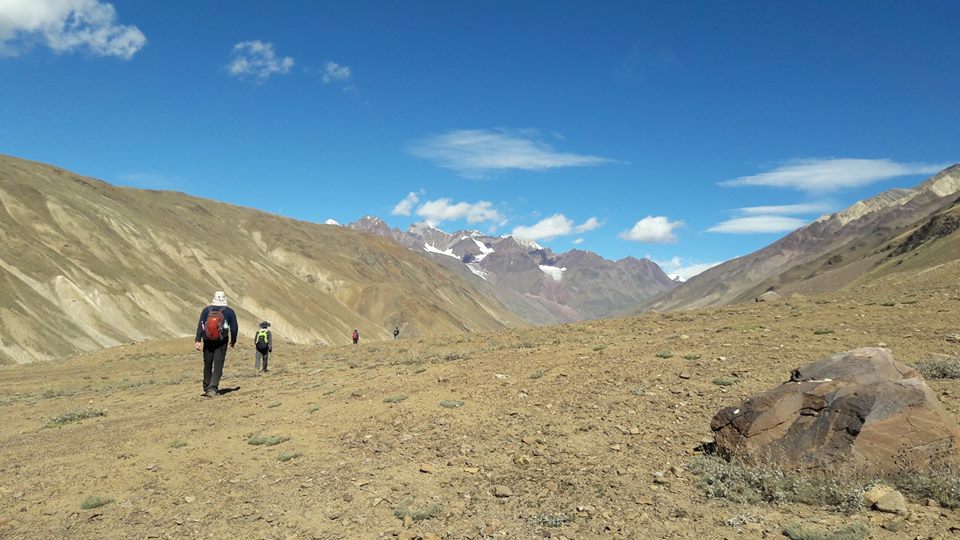
Bara Banghal Trek 
Bara Banghal Trek 
Full Moon 
Bara Banghal Trek 
Temple 
Goat herd 
Snow Bridges 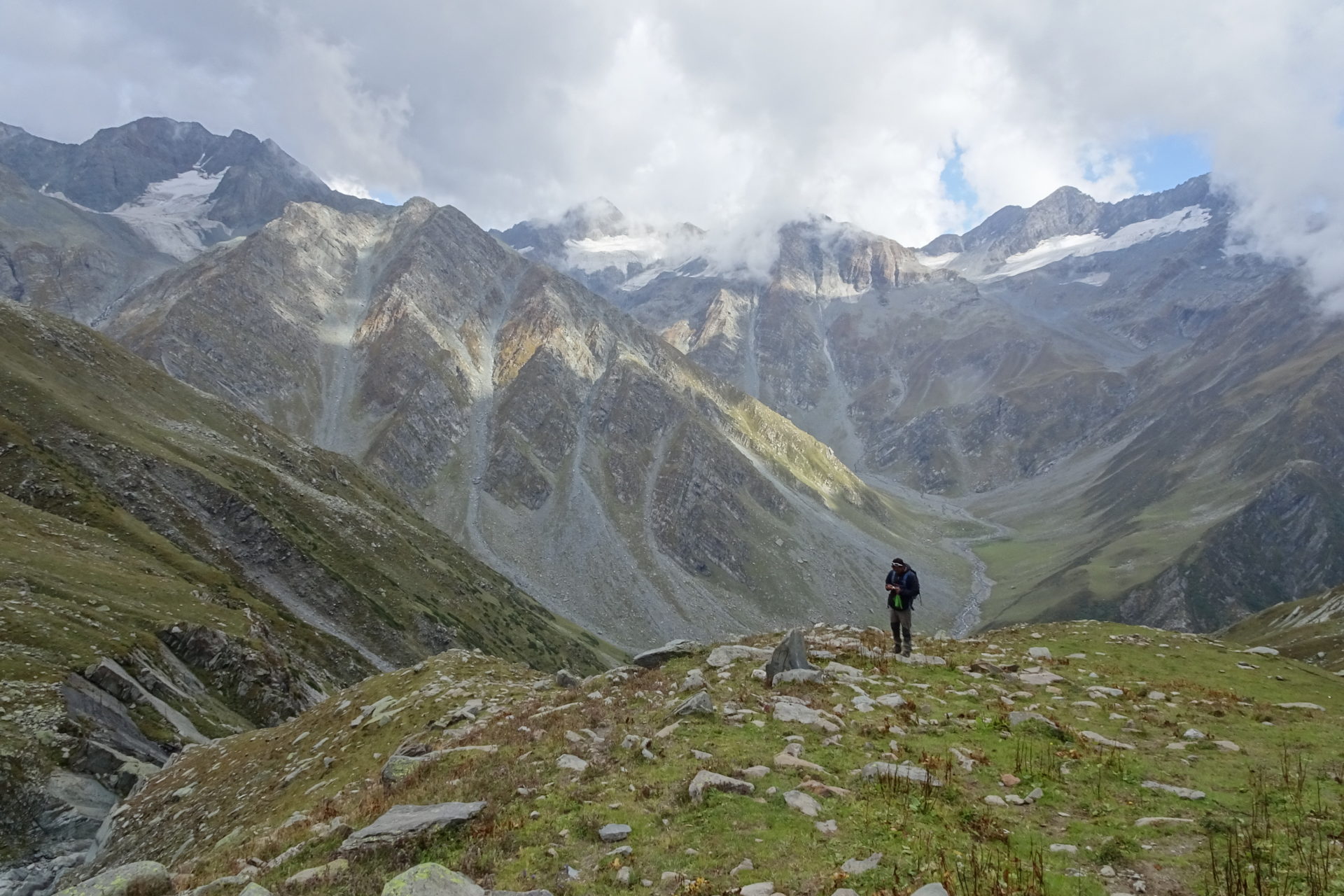
Bara Banghal Trek 
Bara Banghal Trek 
Bara Banghal Trek 
Bara Banghal 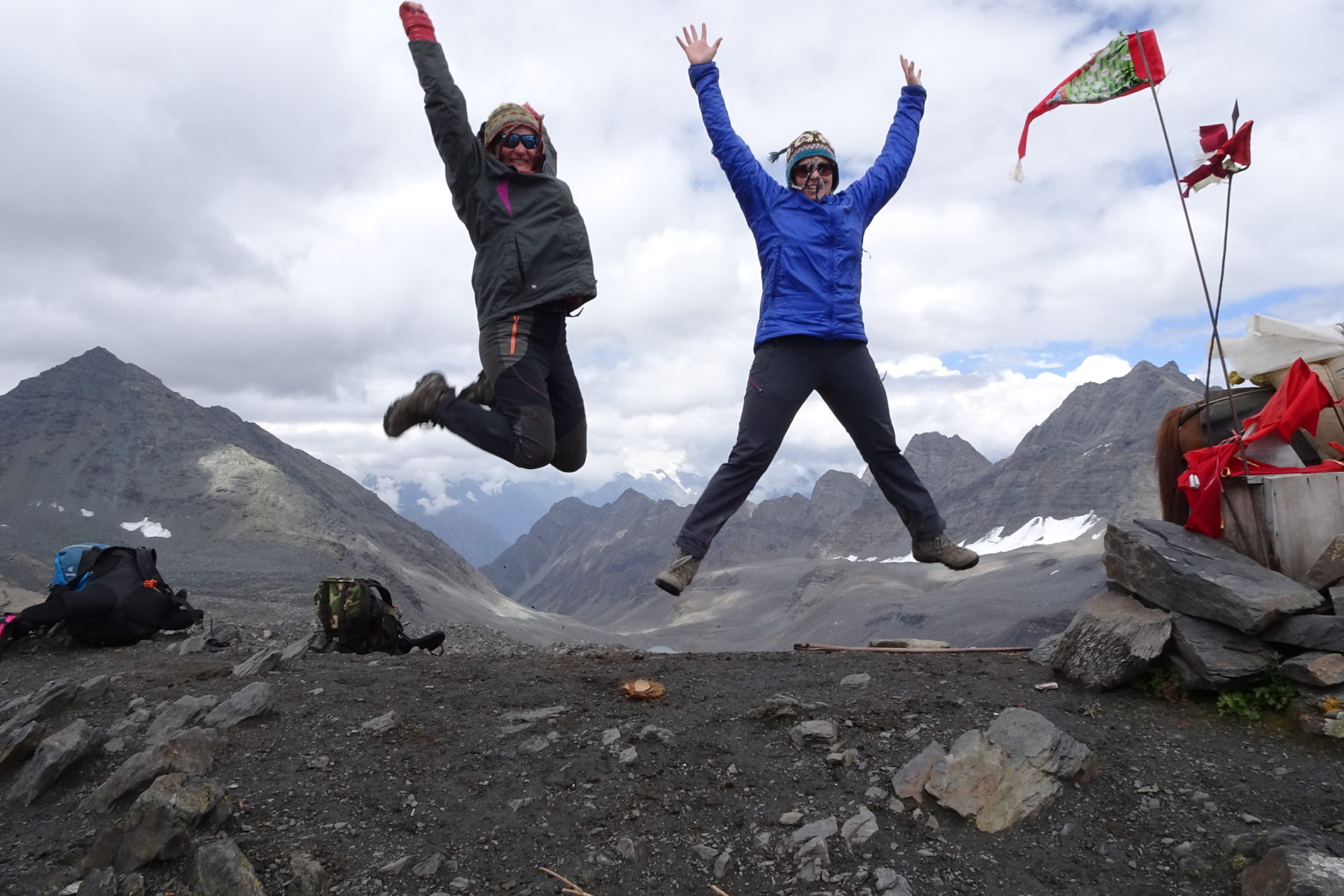
Thamsar Pass 
View out of the tent 
Bara Banghal Trek 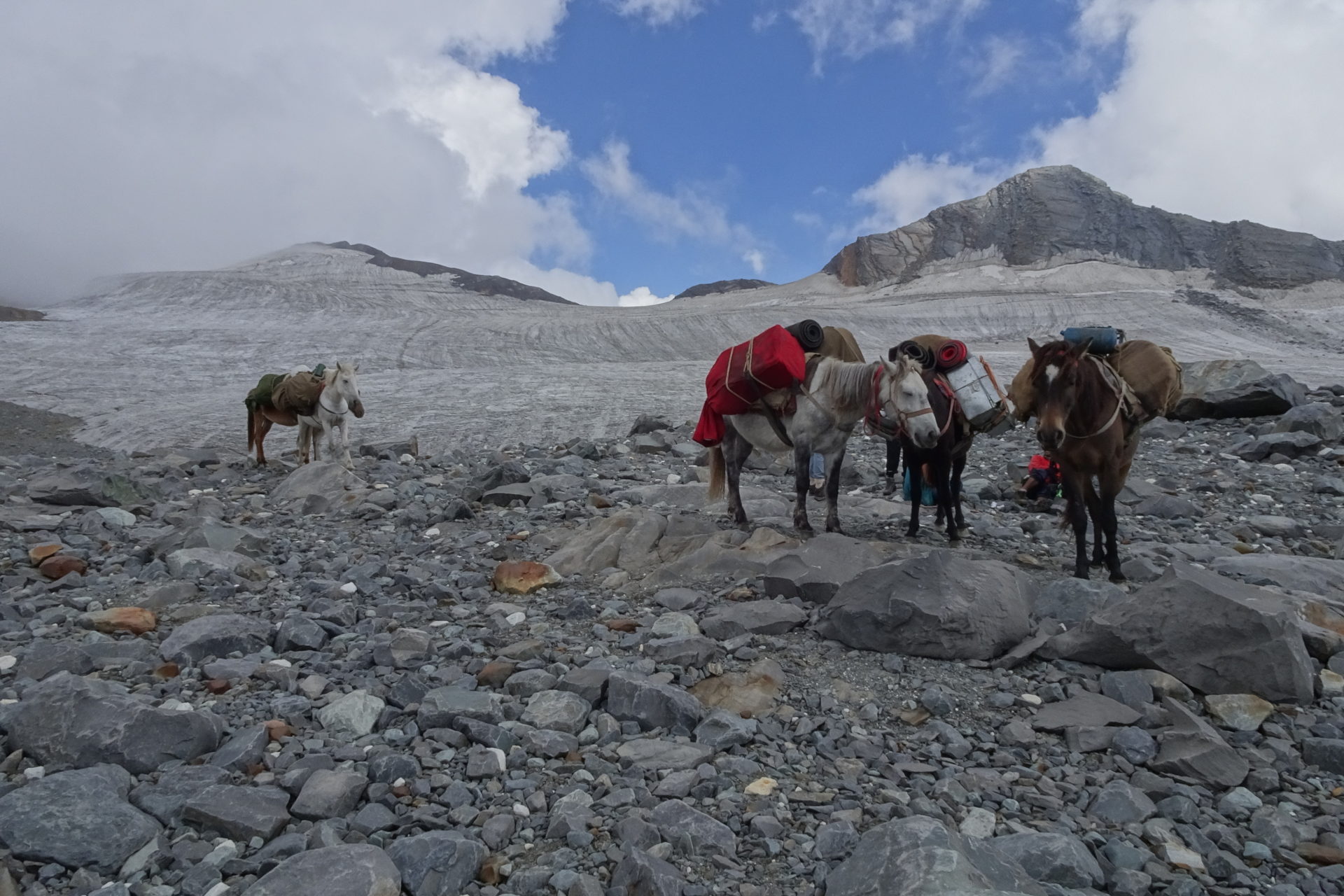
Bara Banghal Trek 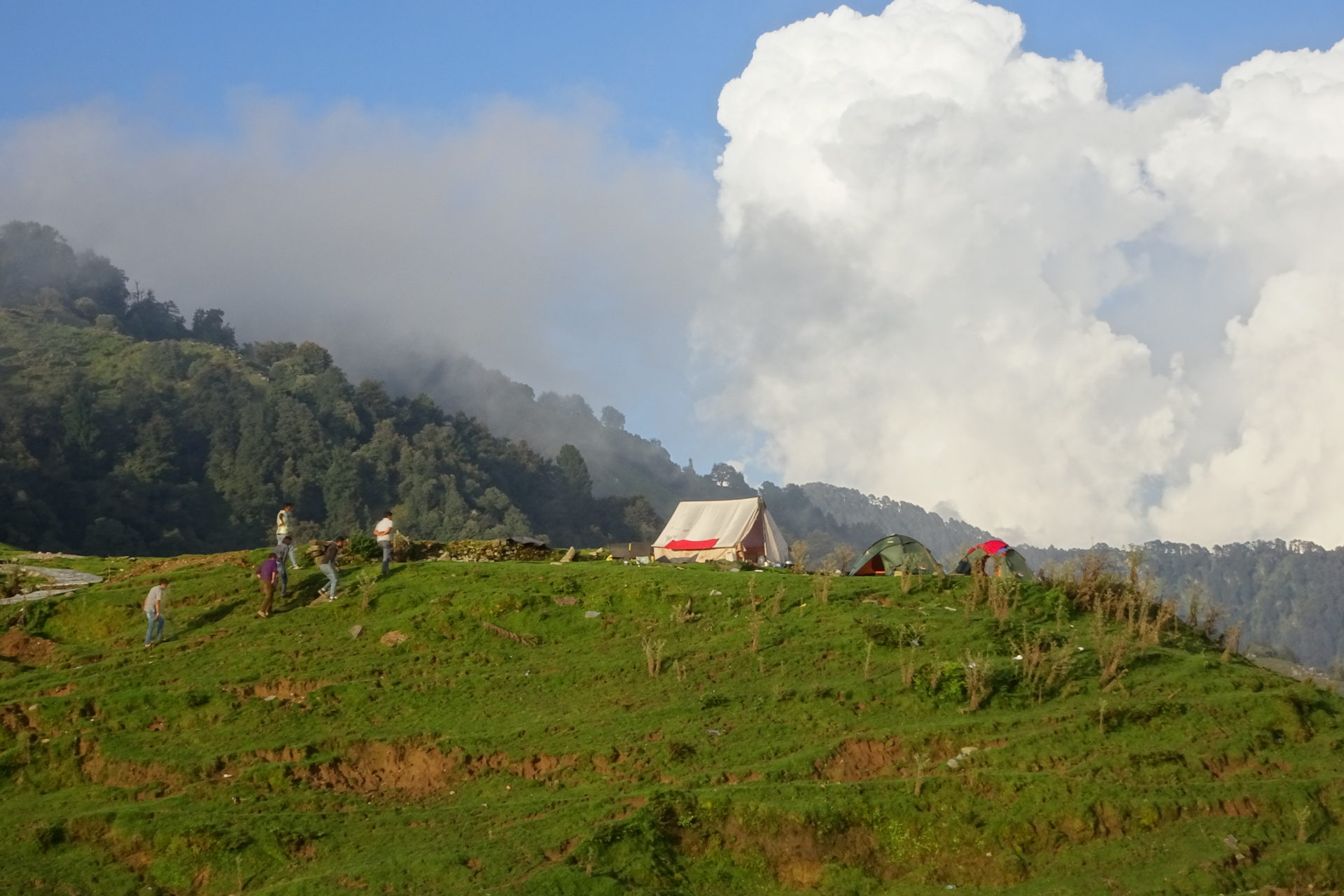
Bara Banghal Trek 
Bara Banghal Trek 
River Crossing 
Bara Banghal Trek 
Bara Banghal Trek 
Bara Banghal Trek
Prices and Dates
This trek is possible from June to October. In August this trek is not possible due to the monsoon.
1 participant from 1950 € per person
2 participants from 1199 € per person
3-4 participants from 900 € per person
5-6 participants from 849 € per person
Tour Info
Requirements
This trek is relatively challenging due to the height of more than 4700 meters. Twice high mountain passes have to be crossed. This trek requires perseverance, sure-footedness and vertigo.
Information about the Trekking Tours with Chalo! Travels
Mountain guide and trekking team
On all our treks we have at least one (for larger groups of 6 participants two) trained local mountain guide. Our mountain guides have all completed at least the Indian mountaineering training, many of them have also completed the advanced courses.
They are familiar with the trekking routes and know the terrain excellently. All our mountain guides speak English.
In addition, there is a local team consisting of a cook (if the group consists of only two participants, the mountain guide also takes over the tasks of the cook), helpers, horsemen with horses or Nepalese porters, depending on the type of trek.
All our team members have been working with us for years, are very friendly and always strive to provide our guests with a great trekking experience. Their English (besides of the Guide) is rather mediocre or non-existent, but this is not necessarily a hindrance to communicating with them.
Trekking routes
The trekking routes are designed according the skills of our guests and are all feasible for a person with a good fitness level, unless otherwise mentioned. The daily routes are between five and eight hours long (with breaks) and an average increase of around 500-800 metres of altitude is completed.
In between, rivers may have to be crossed. The paths are partly well developed, but sometimes also almost non-existent. On our trekking routes there are hardly any villages in between, so we will take enough food for the whole tour.
On our treks we cross passes, snow or glaciers. On steep slopes, we have safety equipment with us.
Daily routine (Depending on the length and intensity of the trek, the times may vary)
7: 00 am Get up with Tea
7:30-8:30 am Breakfast
7:00-9:30 am Dismantling of the camp
8:00- 9:30 am Start Trek
1:00 pm Lunch on the way
3:00-5:00 pm Arrival at the camp and camp construction
3:30-5:30 pm Snacks
7:00 pm Dinner
Altitude and altitude sickness
Altitude sickness is a very important topic that should not be underestimated, especially during our trekking tours in the Indian Himalayas. At altitudes above 3500 m, our body has to slowly get used to the low air pressure, which also causes less oxygen to enter our lungs. The first signs of altitude sickness are headaches, which are accompanied by dizziness, nausea, insomnia and loss of appetite. It becomes problematic when water accumulates in the lungs and brain and edema occurs. Then only the immediate descent to lower altitudes will help. To prepare for the heights on our treks, we will either spend a few nights at high altitudes before the trek or slowly ascend during the trek to acclimatize. If we notice that there are problems with our guests (each person is otherwise able to acclimatize, regardless of age, gender and fitness level), it may happen that either the entire group or the concerned participant descends/returns with a team. In addition, it makes sense to take an emergency drug for altitude sickness. For this, it is best to consult the pharmacy or the travel doctor. For certain treks we will also have oxygen with us.
Luggage
Each trekking participant is responsible for his own clothes and personal belongings. Depending on the trek, we are either with horses or porters. If we have load horses, one bag per participant can be loaded onto the horse. In the case of treks with porters, all personal luggage must be carried independently. Tents, sleeping bags, mattresses and food are carried by our porters.
For trekking tours with horses, a day backpack with space for the lunchbox, a water bottle and warm overcoat clothing should be taken with you. Here to the complete packing list for our trekking tours.
Packing list for trekking tours
- sleeping bag at least -10°C
- large backpack or soft carrying bag so that the load animals can carry the luggage
- Small carrying backpack for the day approx. 30-40 l with rain protection
- flashlight/headlamp
- 2 refillable water bottles
- hiking poles
- passport and passport copy
- camera with spare battery and memory card
- headgear as sun protection
- Good Sunglasses
- cap
- Scarf, Buff
- Gloves
- wind-proof trekking pants
- trekking pants
- Functional Underwear Long
- hiking boots
- socks thick and thin
- sneakers, sandals and/or slats
- windbreaker
- Warm Jacket
- fleece sweater/jacket
- Tshirts
- sunscreen, lip balm min. Protection 40
- fat cream
- water purification tablets (boiled and filtered water is provided)
- own medications for headaches, nausea, digestive problems, colds)
- bubble patches and dressing material
- own hygiene articles
- Toilets Paper
- hand disinfection
Meals
During the trek there will be a vegetarian full catering. Water is either boiled or we have a water filter with us.
Breakfast (daily selection):
- Coffee/Tea
- Oatmeal porridge/muesli/cornflakes/Indian porridge
- Indian breakfast
- Sliced fruit/vegetables
Lunch (mostly lunchbox), sometimes warm in the camp
- Sandwiches/Indian (rice, chapati, vegetables)/potatoes
- Juices
- Chocolate
- Fruit
Snacks
- Tea/coffee
- Cookies
- French fries/Indian snacks
Soup
Dinner (depending on the length of the Trek mix of Indian/Chinese/Continental)
- Vegetable dish
- Lentil dish
- Rice/noodles
- Chapati
- Salad
- Dessert
Accommodation and camp
We have very comfortable and spacious two-man tents. Our mattresses are practical but simple if there are problems with sleeping on hard surfaces, please take your own mattress with you or order from us. Our sleeping bags are freshly washed and have a very good quality with comfort zone up to -5°C/extreme zone up to -20° C. It is recommended to bring personal indoor sleeping bags.
In addition, we have a spacious dining tent with tables and chairs, a kitchen tent for the team and a toilet tent. For treks up to 4 people, the kitchen tent can also act as a dining tent at the same time.
For trekking tours with porters, we will take our smaller, lighter tents with us and do without a toilet tent.
Weather
In the Himalayas, temperatures fluctuate widely. While it can get warm up to 25°C during the day and the sun is not only warming, but also very intense (sun protection is a must), it can also cool down significantly below the minus-grade at night, especially in the months end of September and October, as well as in June. There may also be weather changes with snow on the passes.
-
5
Überschrift
Lorem ipsum dolor sit amet, consetetur sadipscing elitr, sed diam nonumy eirmod tempor invidunt ut labore et dolore magna aliquyam erat, sed diam voluptua.



